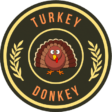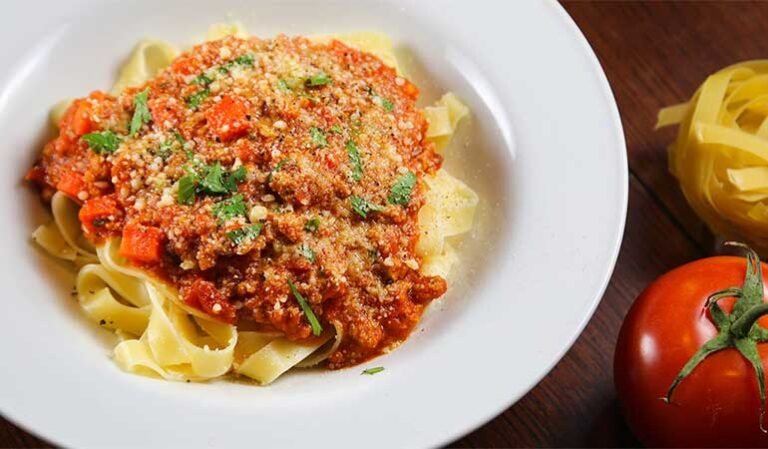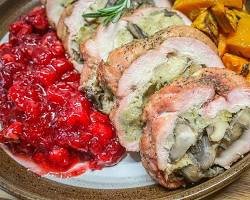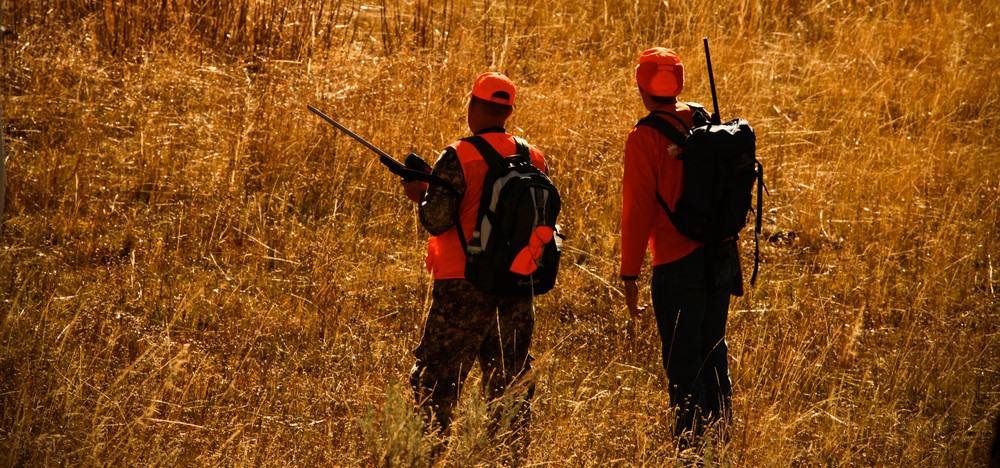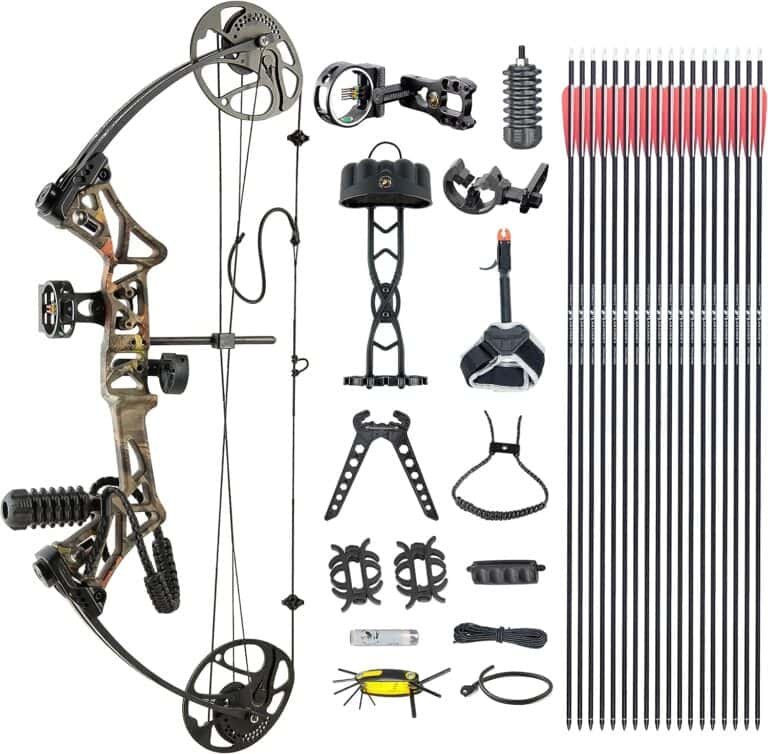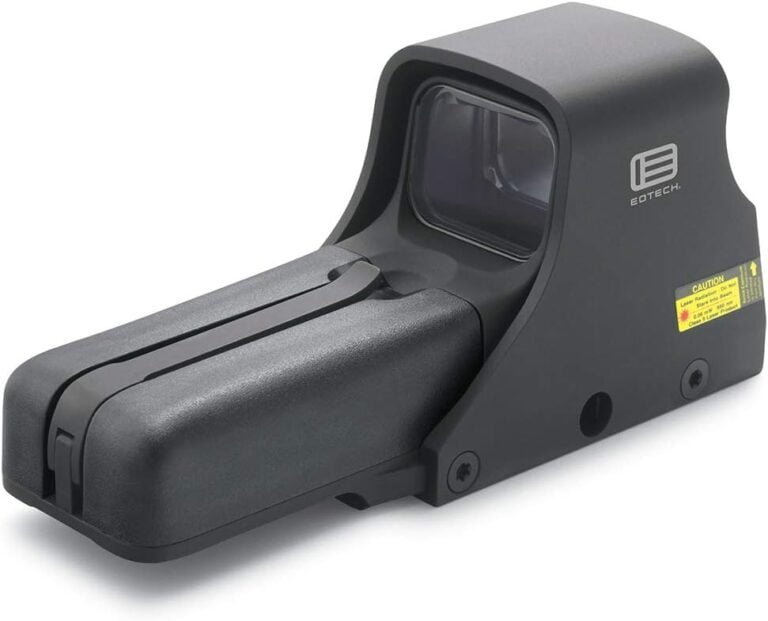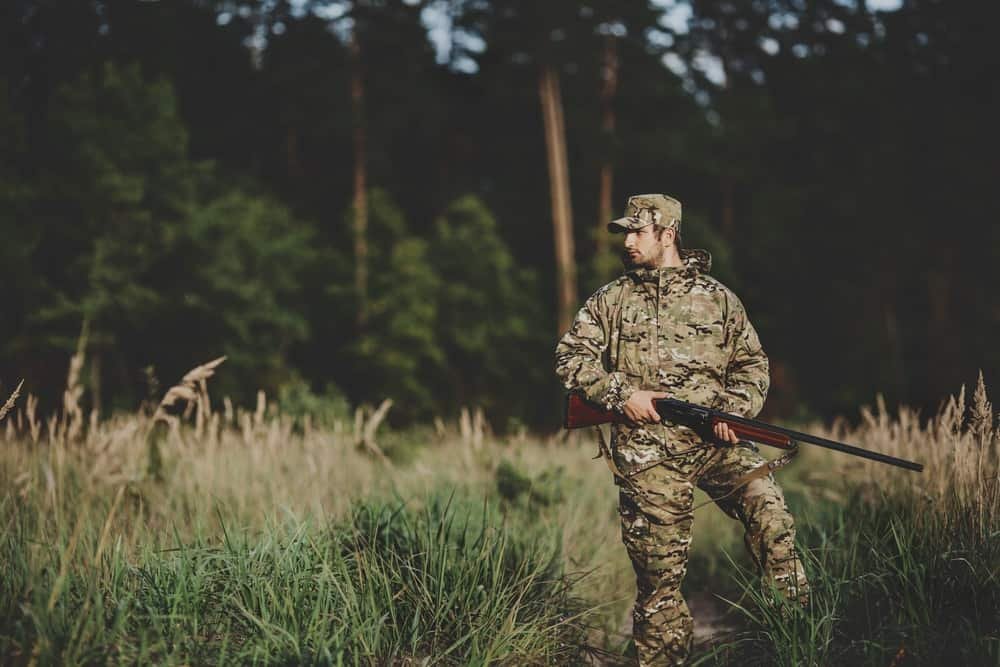Choosing the Best Turkey Loads to Maximize Your Success!
Turkey hunting, a thrilling and challenging pursuit, requires more than just stealth and good aim. It demands careful consideration of the ammunition used – specifically, the turkey load. In this blog we will discuss the best turkey loads to maximize your success!
Your choice of turkey load can make or break your hunt, determining whether that majestic gobbler ends up on your Thanksgiving table or vanishes into the wilderness unscathed. So, let’s delve into this topic and explore why selecting the right turkey load is paramount for a successful hunt.
The Importance of Selecting the Right Turkey Load
When it comes to turkey hunting, precision is key. Turkeys have an uncanny ability to detect danger and can swiftly evade poorly executed shots.
This is where selecting the appropriate turkey load becomes crucial. Choosing a load with optimal shot size, pattern density, and velocity greatly impacts your chances of hitting your target effectively.
Shot Size: The Tiny Projectiles That Matter
Shot size refers to the diameter of individual pellets in a shotgun shell. It plays a vital role in determining how well your shots penetrate the thick plumage and dense muscle tissue of turkeys. Larger shot sizes like #4 carry greater pellet energy capable of achieving deeper penetration into a turkey’s vital areas, increasing your chances for an ethical harvest.
On the other hand, smaller shot sizes like #6 offer more pellets per shell, resulting in denser patterns which can be advantageous for close-range shots or when hunting in dense cover. These patterns increase the probability of multiple pellets striking critical areas simultaneously.
Pattern Density: The Art of Hitting Your Mark
Pattern density refers to how closely grouped pellets are within a certain radius at different distances from your target. Achieving an optimal pattern density is essential for ensuring lethal hits on turkeys as it increases your chances of hitting vital organs or breaking bones. Factors such as barrel length and choke selection significantly influence pattern density.
Longer barrels tend to produce better patterns due to increased muzzle velocity, which helps maintain the integrity and tightness of the shot column. Additionally, choke constrictions play a critical role in controlling the spread of pellets, allowing you to tailor your pattern density according to specific hunting situations.
Velocity: The Need for Speed?
When it comes to turkey loads, velocity matters. Higher velocities can provide increased pellet energy, enhancing terminal performance on turkeys. This translates into deeper penetration and more devastating impacts on vital areas.
However, it’s important to strike a balance between velocity and recoil management. Extremely high-velocity loads can lead to excessive recoil, affecting your ability to make quick follow-up shots accurately.
Finding a load that offers adequate speed without compromising control over your firearm is key. Now that we understand the significance of shot size, pattern density, and velocity in determining the effectiveness of a turkey load let’s explore popular brands and their offerings in our next section.
Understanding Shot Size
In turkey hunting, shot size plays a crucial role in determining the effectiveness of your load. Understanding the shot size numbering system is essential for making informed decisions.
The numbering system typically ranges from #4 to #7, with smaller numbers indicating larger pellets. For instance, #4 shot is bigger than #6 shot.
The Pros and Cons of Different Shot Sizes for Turkey Hunting
When it comes to turkey loads, choosing the right shot size depends on various factors and trade-offs. Larger shot sizes like #4 provide increased pellet energy and deeper penetration upon impact.
This can be advantageous when targeting a turkey’s vital organs such as the head or neck. On the other hand, smaller shot sizes like #6 are known for their ability to produce denser patterns at longer ranges.
These loads excel in situations where precision and accuracy are paramount, allowing you to extend your effective range while maintaining pattern density. Understanding the pros and cons of different shot sizes empowers you to select the ideal load based on your hunting style, target distance, and desired outcomes.
Factors Influencing Pattern Density
Barrel length and choke selection’s impact on pattern density
When it comes to achieving optimal pattern density with your turkey load, two key factors come into play: the length of your shotgun barrel and the type of choke you choose. Let’s start with barrel length – a longer barrel tends to provide better patterns due to increased muzzle velocity.
The additional length allows for a more complete combustion of the gunpowder, resulting in higher projectile speeds. This, in turn, leads to tighter patterns downrange, giving you a better chance of hitting that elusive gobbler.
Longer barrels tend to provide better patterns due to increased muzzle velocity
Think about it this way – when you fire a shotshell from a longer barrel, the pellets have more time to accelerate before leaving the muzzle. This increased muzzle velocity translates into greater kinetic energy and tighter groupings on target. While shorter barrels may be lighter and more maneuverable in dense woods or tight hunting blinds, they often sacrifice some pattern density compared to their longer counterparts.
Choke constrictions affect pattern spread at different distances
Now let’s talk about chokes – these nifty devices screw onto the muzzle end of your shotgun and control how tightly or loosely the shot disperses as it exits the barrel. Choke constrictions come in various sizes, ranging from “cylinder” (no constriction) to “extra full” (maximum constriction).
Each choke constriction has its own unique effect on pattern spread at different distances. For example, an “improved cylinder” choke provides a relatively open pattern ideal for close-range shots such as when hunting in thick brush or within 20 yards.
On the other hand, if you’re aiming for those long shots across open fields or want that extra reach when dealing with a stubborn tom, a “full” or “extra full” choke will tighten your pattern, keeping the pellets closer together for improved accuracy. Remember, it’s essential to experiment with different combinations of barrel length and choke selection to find what works best for you.
Ultimately, achieving the ideal pattern density depends on factors such as your shooting style, hunting environment, and personal preference. So don’t be afraid to test out various setups until you discover the perfect combination that maximizes your chances of bagging that trophy turkey!
Velocity: The Need for Speed?
Explaining the Impact of Velocity on Pellet Energy and Terminal Performance
When it comes to turkey hunting, velocity plays a crucial role in determining the success of your shot. Higher velocities generally result in greater pellet energy, which means increased penetration power and increased chances of a clean kill. This is especially important when targeting turkeys, as their thick feathers and tough skin can make it challenging to ensure an ethical takedown.
The kinetic energy of pellets is directly influenced by velocity. As the pellets travel faster, they transfer more momentum upon impact, increasing the likelihood of vital organ penetration.
Faster velocities also compensate for any potential errors in aim or distance estimation by reducing the effects of gravity and wind drift. So, opting for high-velocity loads can be advantageous when precision matters most.
Trade-offs: Balancing High Velocity and Recoil Management
While higher velocities offer several benefits for turkey hunting, there are trade-offs to consider as well. One major concern with high-velocity loads is recoil management. When you fire a load pushing pellets out with tremendous force, it naturally leads to greater recoil or kickback.
Recoil can be significant enough to affect your aim if not managed correctly. This issue becomes even more critical during those intense moments when you’re readying yourself for that perfect shot opportunity at a wary tom strutting his stuff.
Excessive recoil might cause flinching or unnecessary movement that could throw off your accuracy. To strike a balance between pellet velocity and recoil management, it’s essential to select ammunition that suits both your firearm and personal comfort level.
Recoil Tolerance
Understanding your own tolerance for recoil will help you find loads that provide an optimal combination of high velocity without compromising accuracy due to excessive kickback. Remember, finding the right balance is key because sacrificing accuracy or control due to excessive recoil defeats the purpose of using high-velocity loads in the first place.
So, take some time to experiment with different loads and assess how they perform in terms of both velocity and manageable recoil. The goal is to find that sweet spot where you can achieve the desired pellet energy without sacrificing control over your shot.
When it comes to velocity, it’s all about finding the right balance. Higher velocities can provide increased pellet energy, leading to improved terminal performance on turkeys.
However, it’s crucial to manage recoil effectively to maintain accuracy and control during critical moments. By understanding the impact of velocity on pellet energy and considering trade-offs for recoil management, you can select turkey loads that maximize your chances of a successful hunt while keeping control of your shot placement.
Popular Turkey Load Brands and Offerings
Overview of Major Ammunition Manufacturers Specializing in Turkey Loads
When it comes to turkey hunting, few would dispute the importance of selecting the right ammunition. Fortunately, several leading ammunition manufacturers have dedicated themselves to producing top-quality turkey loads.
Federal, Winchester, and Remington are among the most reputable brands in this field. These companies have earned a solid reputation for their commitment to excellence and innovation when it comes to designing turkey-specific ammunition.
Flagship Products: Innovation at Its Finest
Federal is well-known for its line of Premium Heavyweight TSS (Tungsten Super Shot) turkey loads, which have garnered considerable attention in recent years. These loads utilize a blend of tungsten-alloy pellets with high pellet counts and unprecedented downrange energy.
The incorporation of TSS pellets allows hunters to achieve tighter patterns and deeper penetration, making it an excellent option for those who prefer longer shots or face challenging hunting conditions. Winchester’s Long Beard XR series has been making waves in the market as well.
What sets these shells apart is their innovative Shot-Lok technology that encapsulates the shot within a resin coating before ignition. This unique feature prevents pellet deformation during acceleration, ensuring more consistent shot patterns downrange.
The Long Beard XR series offers both high-velocity options for extended range shooting and close-range options designed specifically for tight patterns at shorter distances. Remington’s Nitro Turkey line deserves mention too.
With its unique copper-plated lead shot, this ammunition not only delivers dense patterns but also provides enhanced penetration power on impact. This combination makes it highly effective in taking down even the most elusive gobblers from varying distances.
Each brand’s flagship products embody their commitment to providing hunters with cutting-edge technologies designed to maximize performance on turkeys while catering to different hunting preferences and scenarios. Federal, Winchester, and Remington are among the ammunition manufacturers that have made significant advancements in turkey-specific loads.
Their flagship products showcase their dedication to innovation, offering hunters a range of options to choose from based on their specific needs and hunting styles. Whether you’re looking for extended range performance, tight patterns at close distances, or enhanced penetration power, these brands have got you covered.
Specialized Turkey Loads for Specific Hunting Situations
Sub-Gauge Options for Reduced Recoil and Lighter Firearms
When it comes to turkey hunting, not everyone prefers the booming power of a 12-gauge shotgun. Thankfully, there are excellent options available in sub-gauges, such as the 20 gauge. The 20 gauge offers reduced recoil, making it ideal for hunters who want a more comfortable shooting experience or who may have physical limitations.
Additionally, these lighter firearms are easier to maneuver in tight spaces, allowing hunters to navigate through dense vegetation or cramped blinds with ease. Many ammunition manufacturers offer specialized turkey loads for 20 gauge shotguns, ensuring that you don’t have to compromise on effectiveness.
Specialized Loads for Close-Range Hunting or Heavily Wooded Areas
Sometimes you find yourself in situations where close-range shots are the norm or when hunting in heavily wooded areas. In these scenarios, you’ll want specialized turkey loads that excel at shorter distances and deliver optimal results in tight quarters.
Low-density loads with larger pellets come into play here. These loads typically have fewer pellets but each pellet is larger and carries more energy.
This combination allows for deeper penetration and increased lethality at close ranges. With these specialized loads, you can confidently take aim when turkeys strut into your effective shooting range without worrying about excessive pellet spread.
The Advantages of Specialty Loads with Tight Patterns for Long-Range Shots
For those instances when turkeys seem to always be just out of reach or when hunting open fields where longer shots are necessary, specialty loads with tight patterns are your go-to choice. These loads are specifically engineered to provide consistent patterns even at extended distances. They often incorporate advanced wad designs and shot cup technologies that help keep pellets tightly grouped together downrange.
By attaining a dense pattern, these loads increase the odds of placing enough pellets in a vital area to ensure a clean kill. So, when the opportunity arises to attempt those challenging long-range shots, specialty loads with tight patterns can give you the added confidence and precision you need to bag that elusive tom.
Turkey
When it comes to turkey loads, it’s essential to consider the characteristics of the majestic bird itself. Turkeys have tough feathers and a thick, muscular body, requiring ammunition that can penetrate their defenses effectively. Additionally, turkeys possess remarkable agility and speed, meaning you need loads that can deliver swift and lethal shots.
This is where shot size, pattern density, and velocity come into play. Shot size plays a crucial role in your success as a turkey hunter.
Larger shot sizes such as #4 or #5 offer increased pellet energy and deeper penetration upon impact. These loads are ideal for taking down turkeys at close range or in situations where thick foliage may hinder clear shots.
On the other hand, smaller shot sizes like #6 provide denser patterns and longer effective range capabilities. They excel when targeting turkeys at moderate distances or when hunting in open fields.
Pattern Density
Achieving optimal pattern density is vital for hitting vital areas consistently while minimizing the risk of wounding the bird without retrieval. The length of your barrel affects pattern density due to increased muzzle velocity provided by longer barrels.
Pair that with a well-suited choke constriction for your desired distance, and you’ll ensure tight patterns that cover critical areas of a turkey’s head and neck. Velocity is another factor to consider when selecting turkey loads.
Higher velocities translate into increased pellet energy upon impact with the target. This means greater stopping power against tough birds like turkeys.
However, it’s important to keep recoil management in mind since high-velocity loads tend to generate more kickback. Finding the right balance between velocity and manageable recoil will contribute to better accuracy and an overall enjoyable hunting experience.
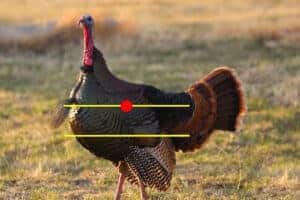
Conclusion
Choosing the best turkey load requires careful consideration of shot size, pattern density, and velocity and understanding the characteristics of these remarkable birds we pursue. Finding the perfect balance between these factors can increase your chances of a successful and ethical hunt. Remember, the right ammunition can make all the difference when harvesting a turkey cleanly and effectively.
So take your time experimenting with different loads, understand your hunting environment, and trust the power of well-informed decision-making. Happy hunting!
